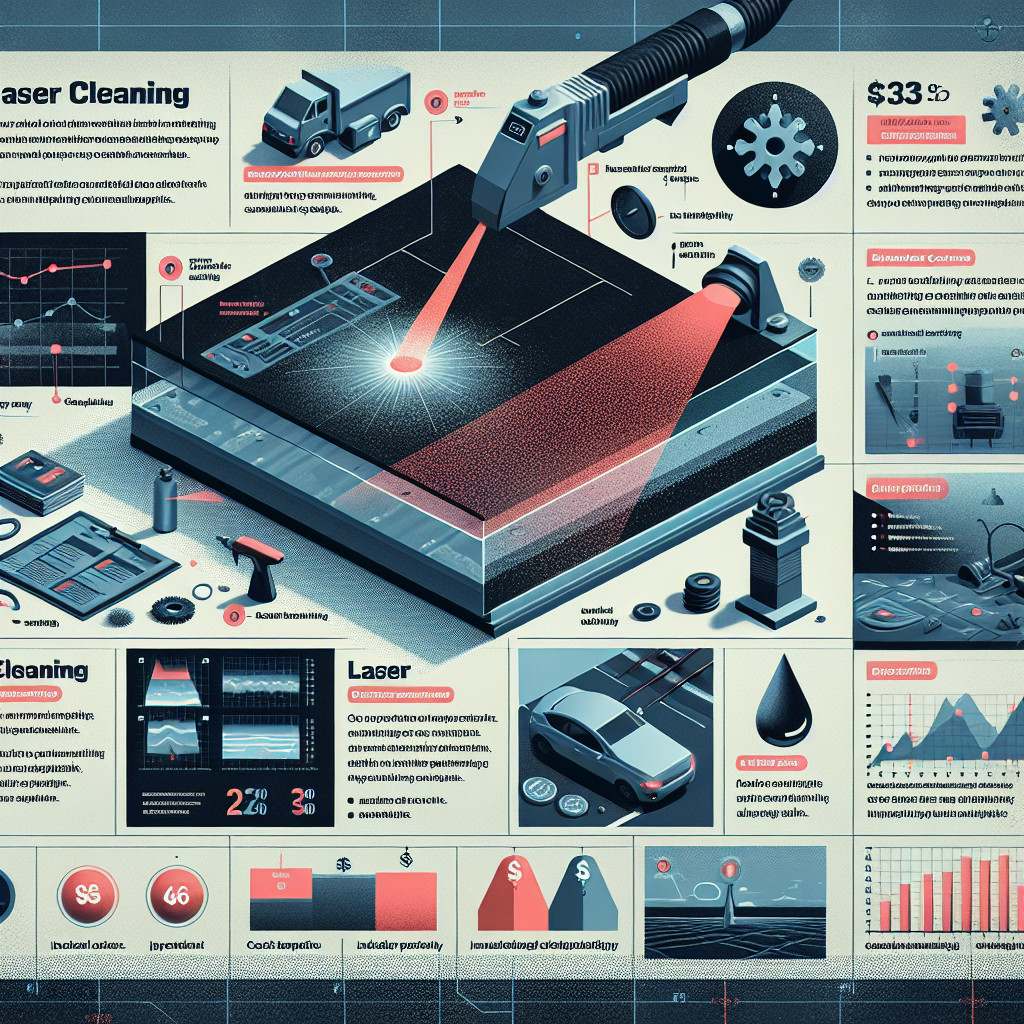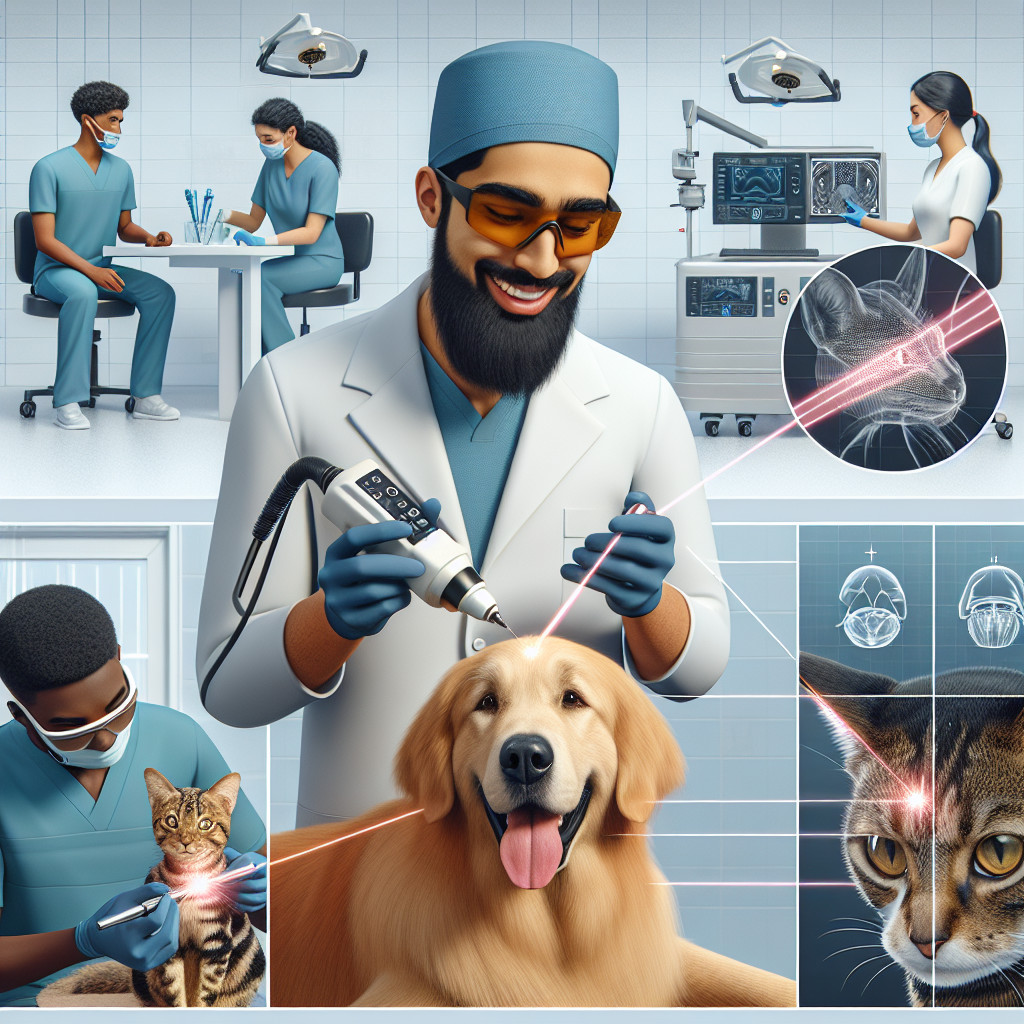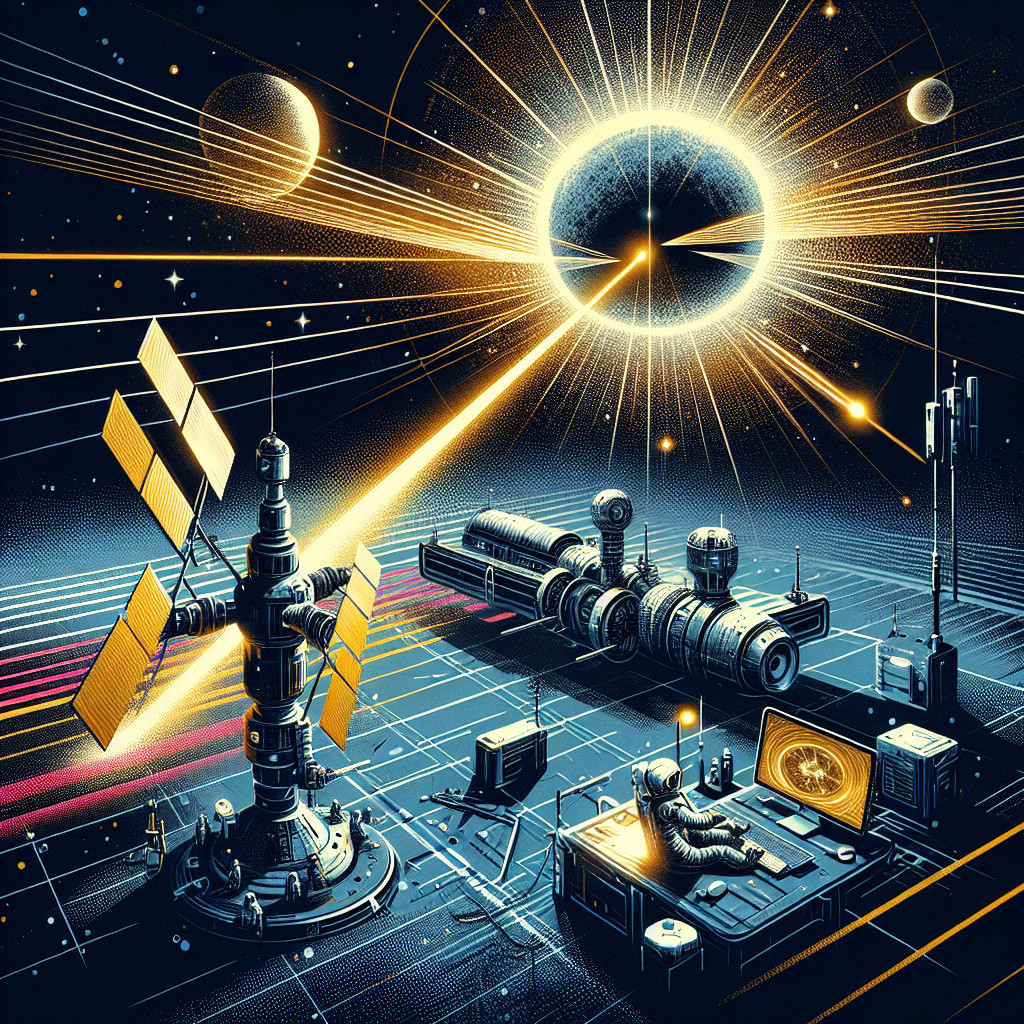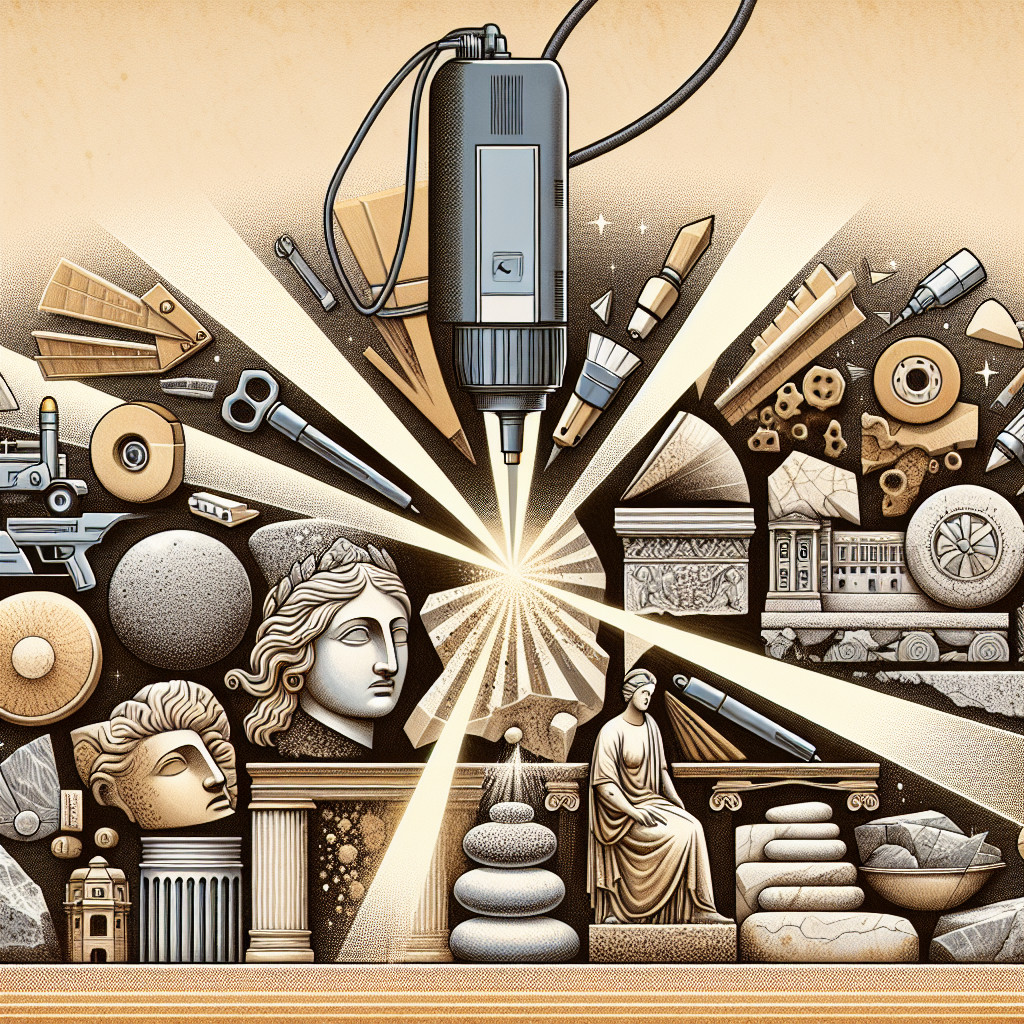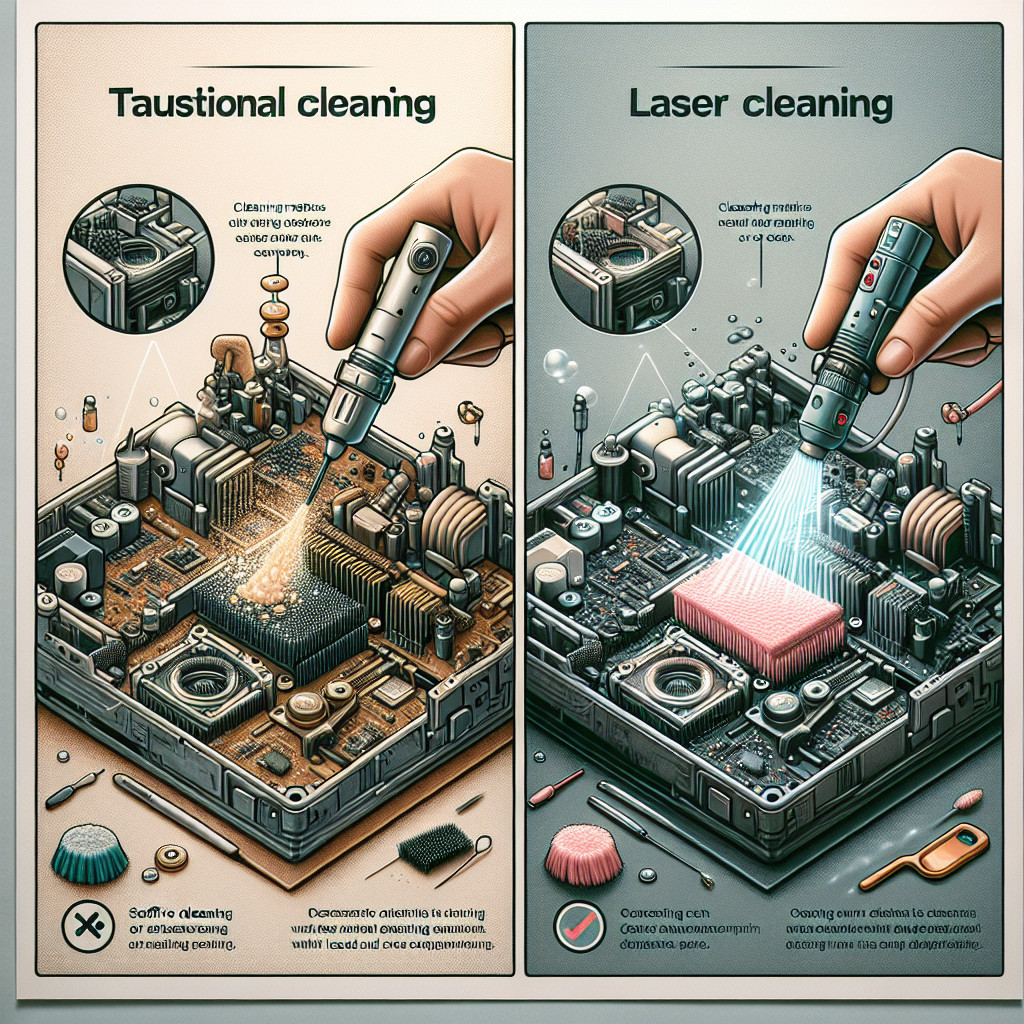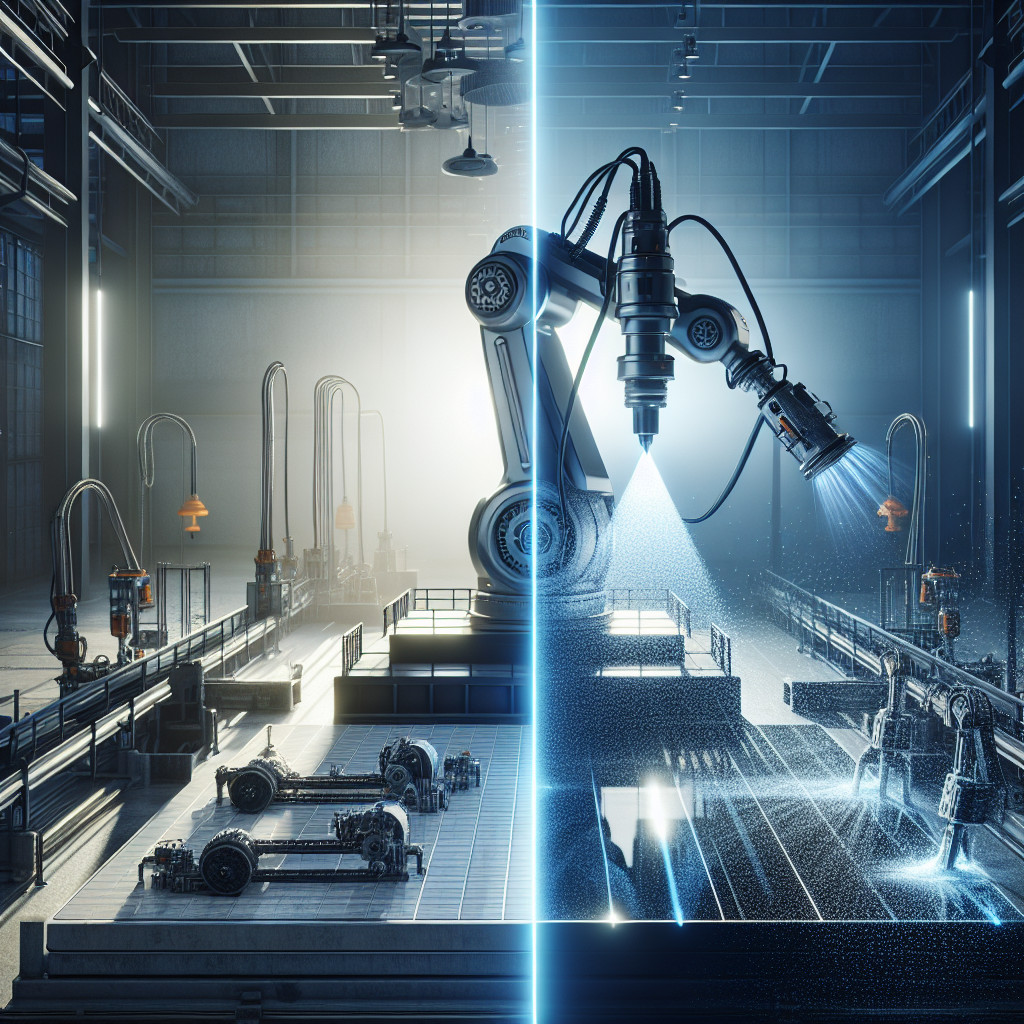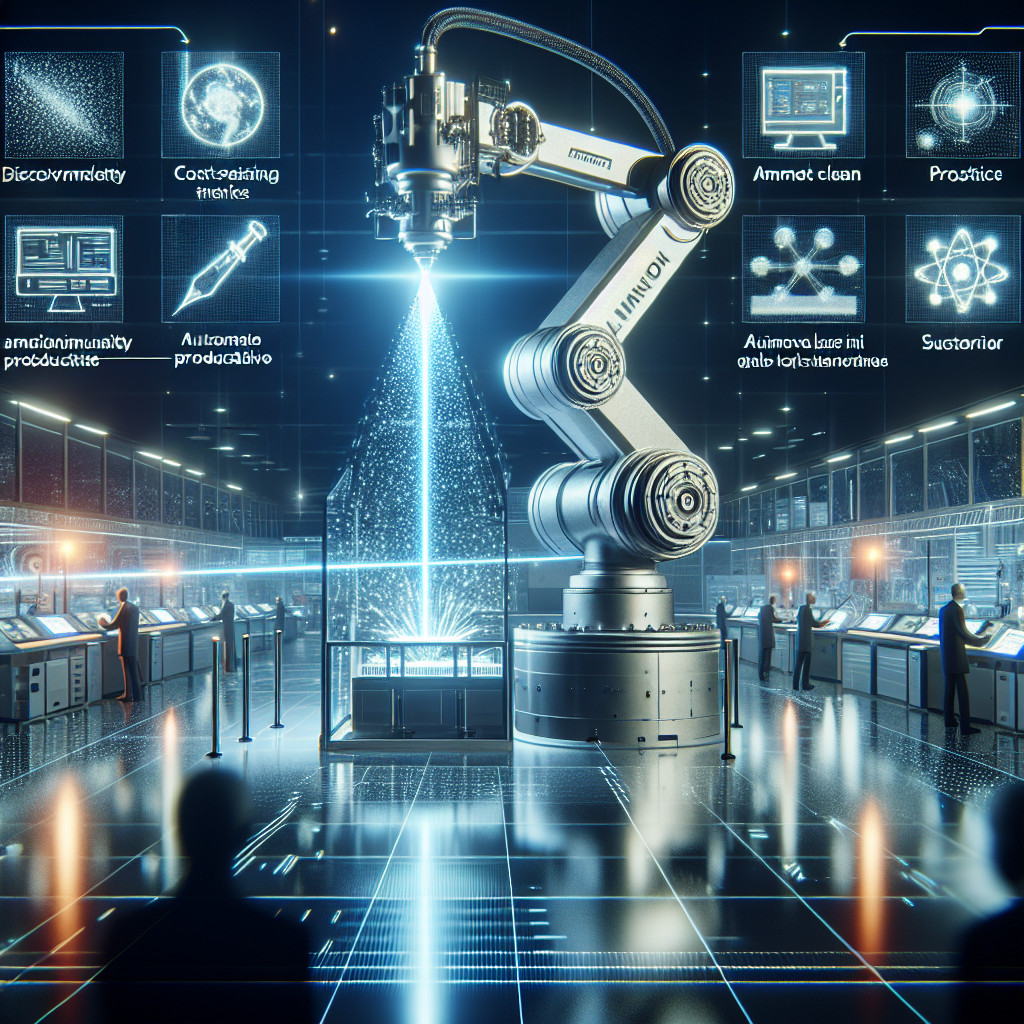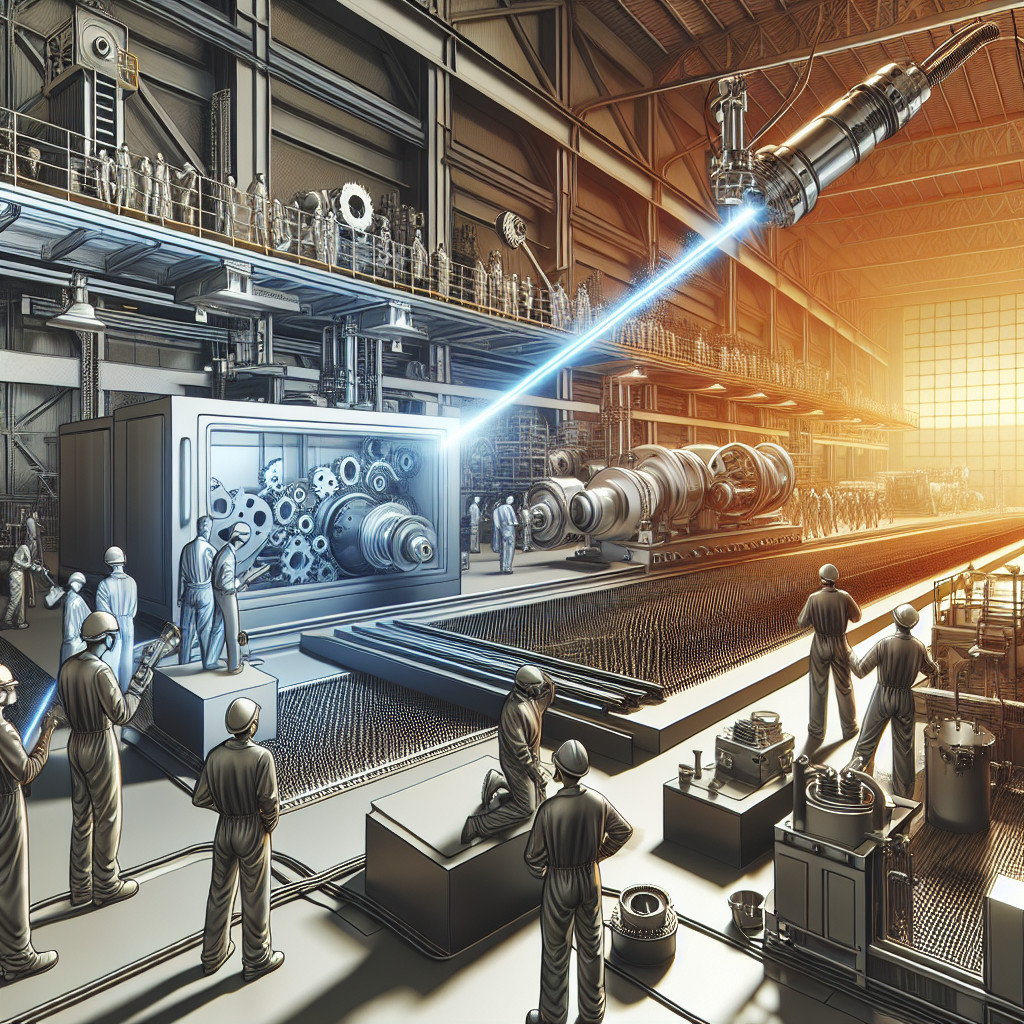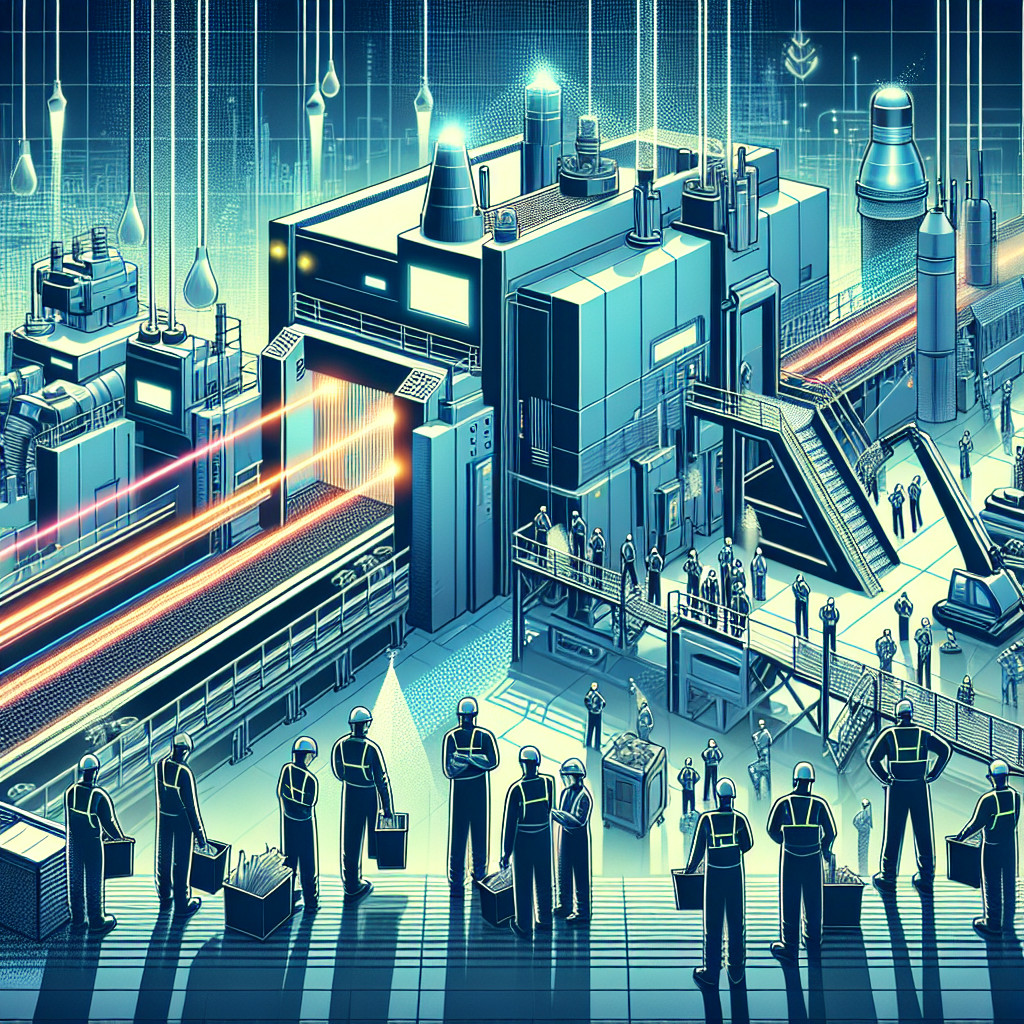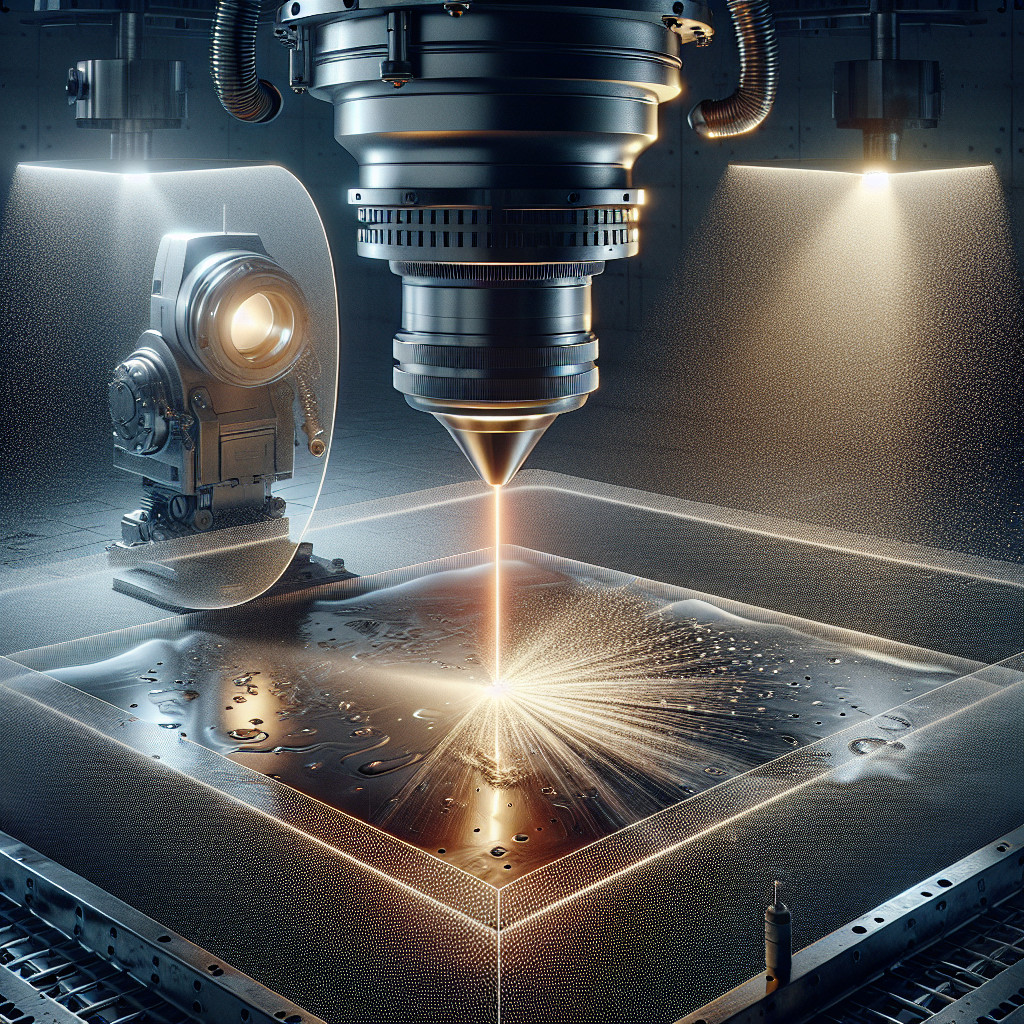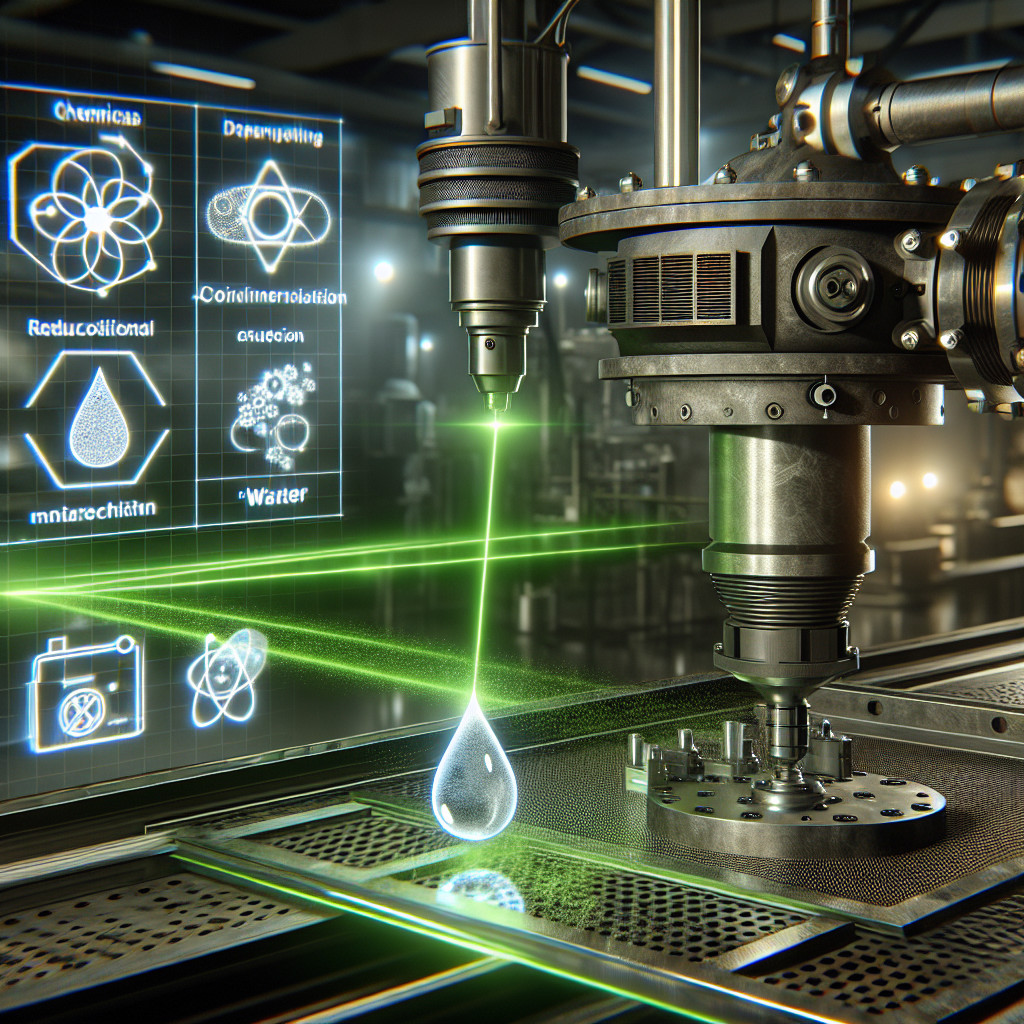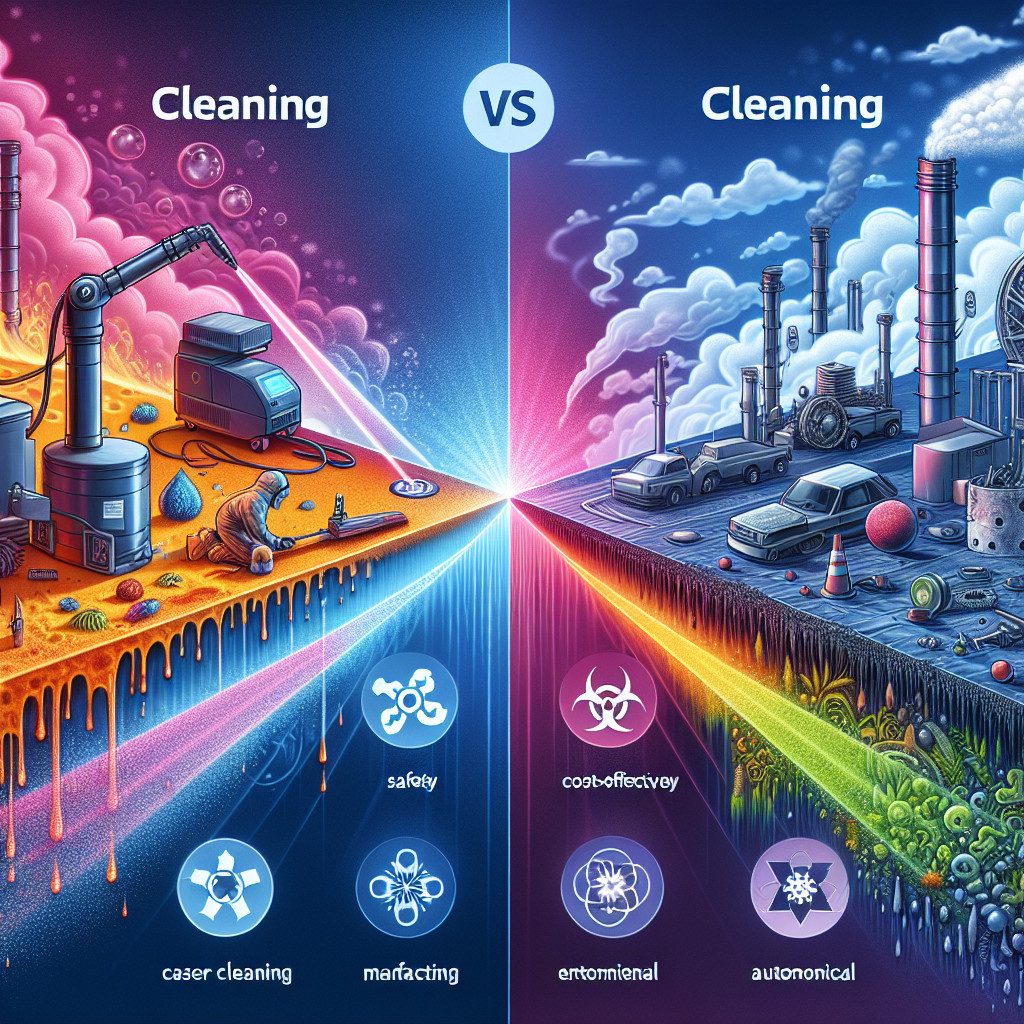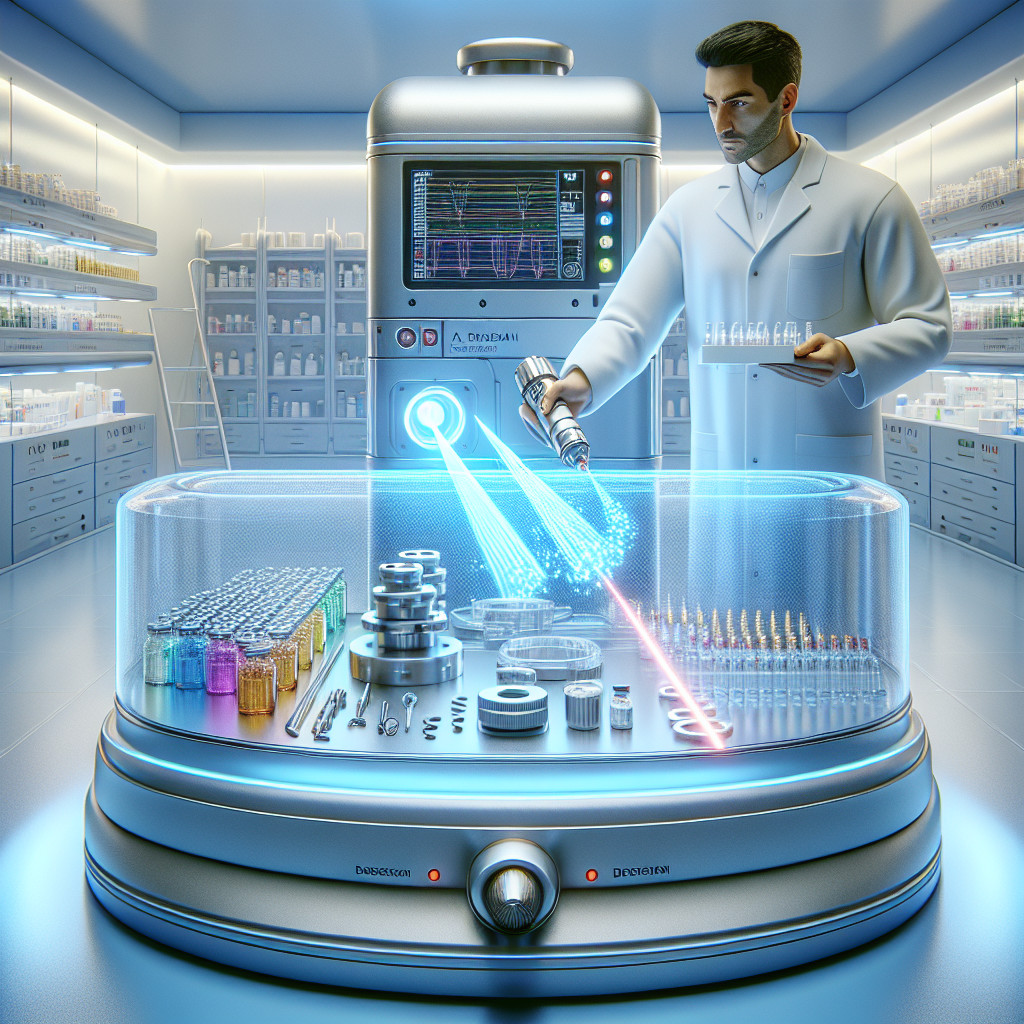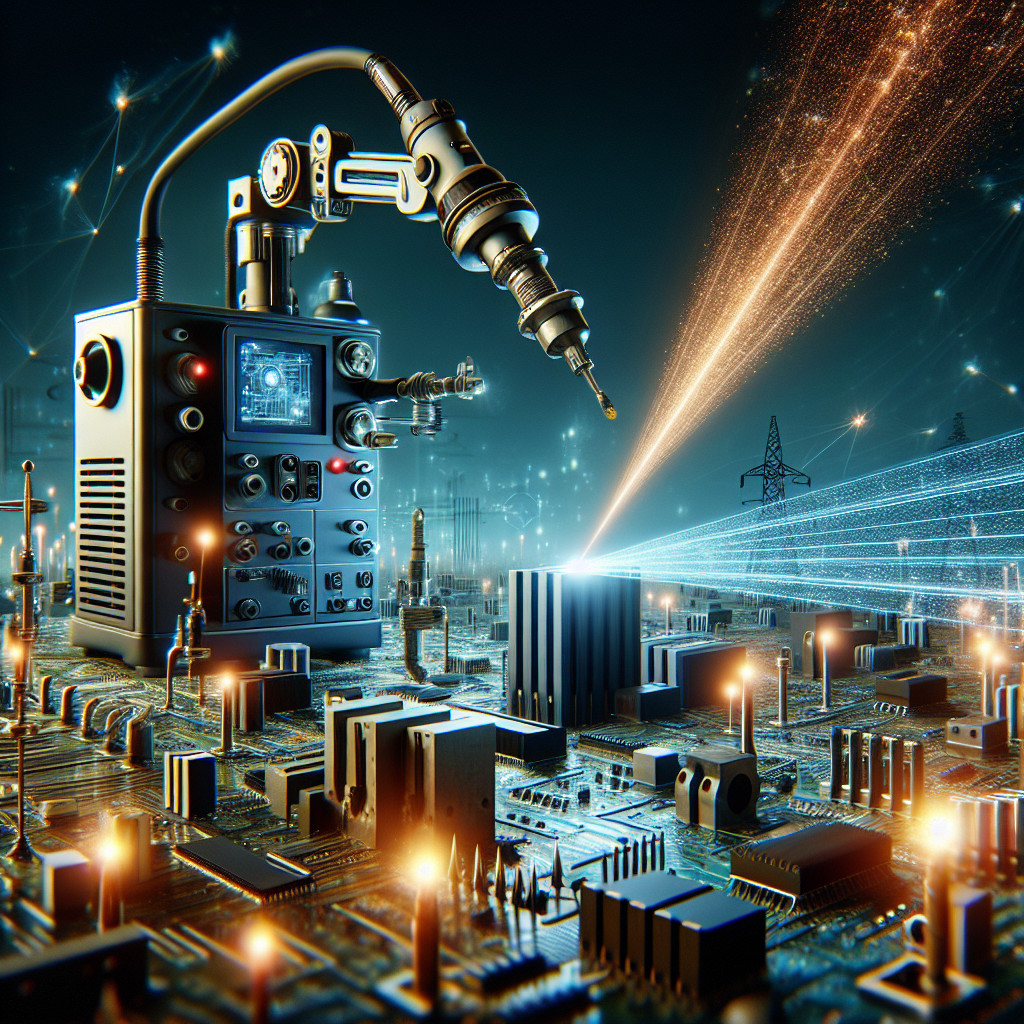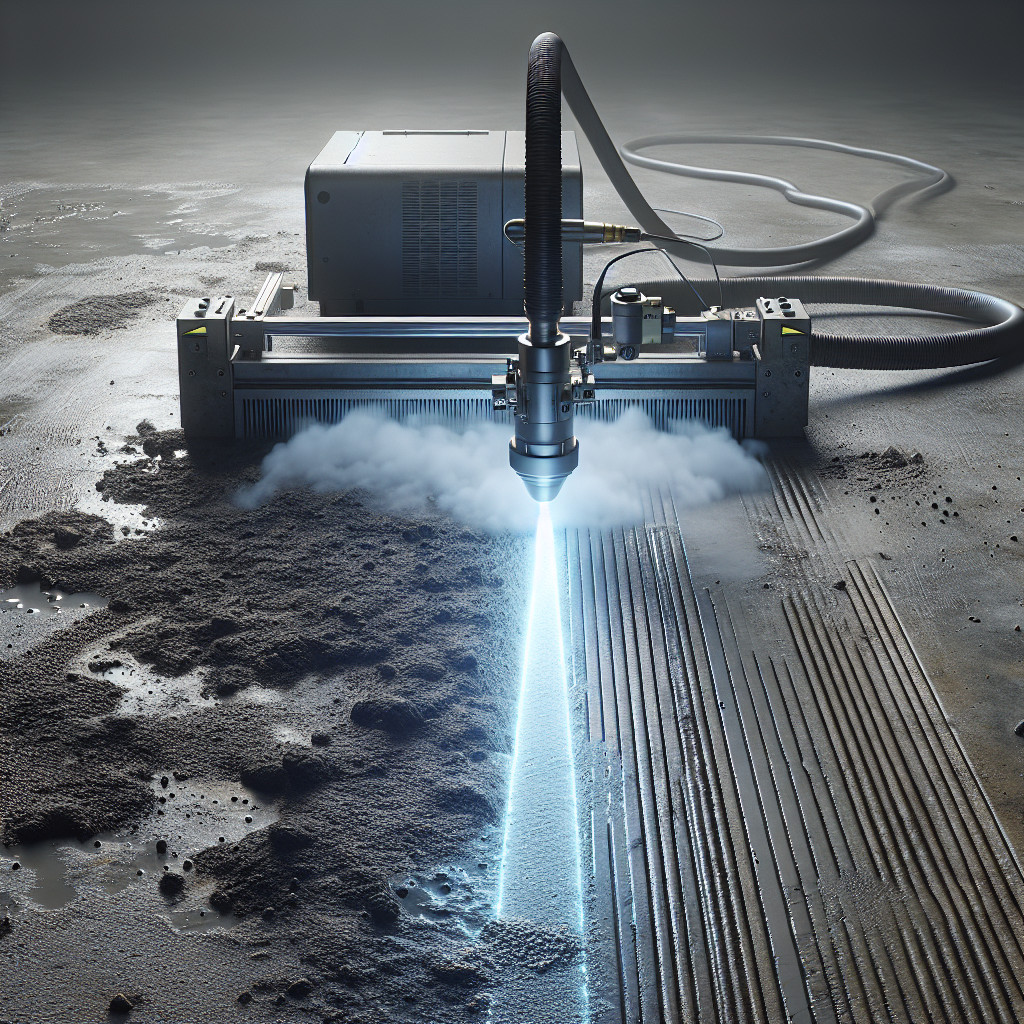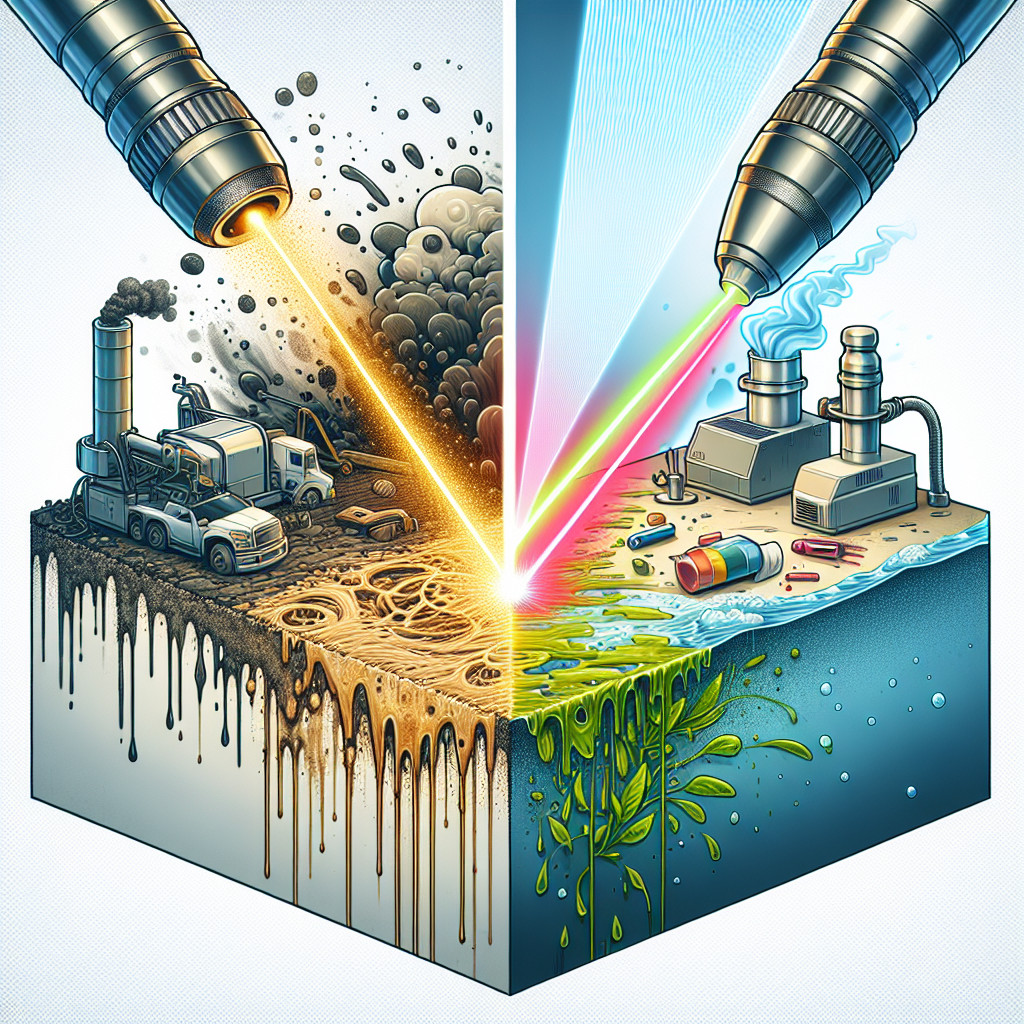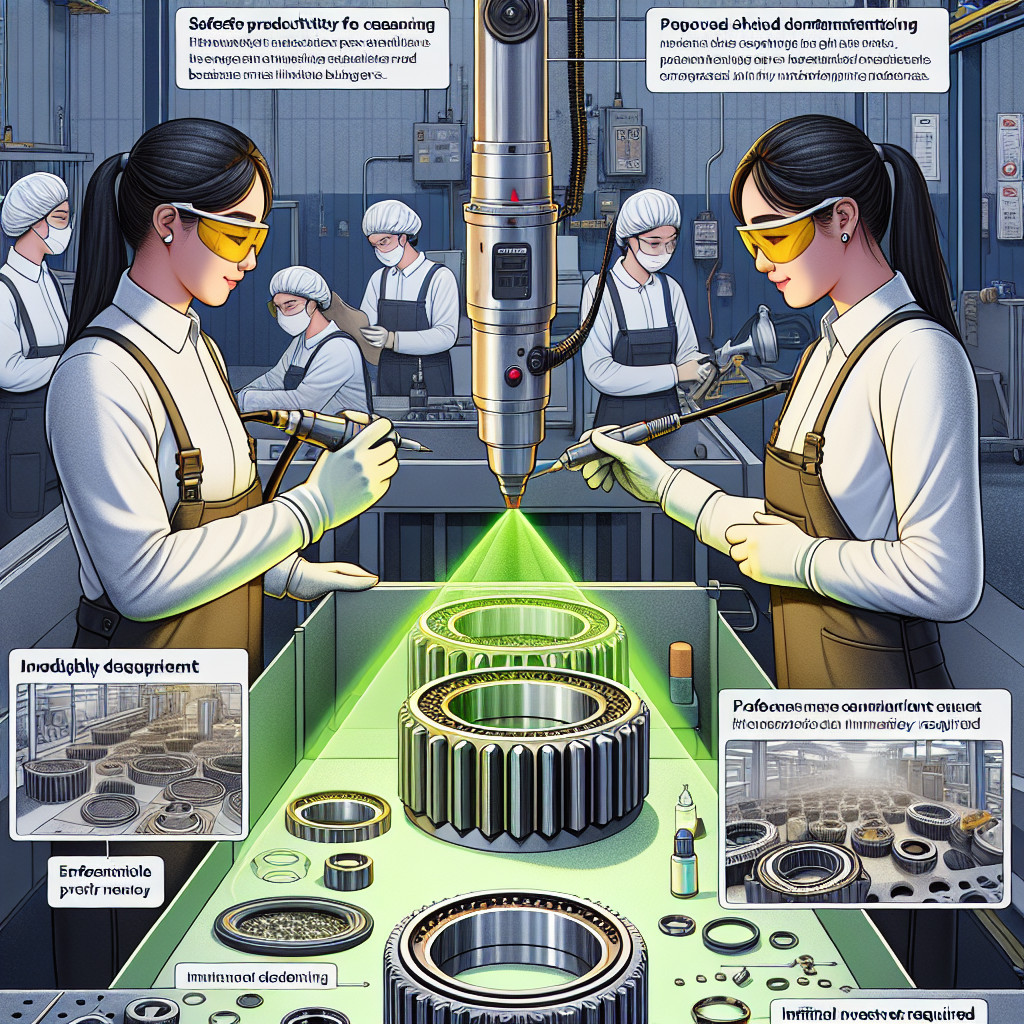- Introduction to laser cleaning in medicine
- Laser cleaning in dental equipment
- Laser cleaning in orthopedic implants
- Laser cleaning in urological instruments
- Laser cleaning in dermatological instruments
- Laser cleaning in biotechnology applications
- Laser cleaning in hospital environments
- Laser cleaning in drug delivery systems
Introduction to laser cleaning in medicine
Czyszczenie laserowe to innowacyjna metoda, która znalazła szerokie zastosowanie w różnych dziedzinach, w tym również w medycynie. Technologia ta umożliwia precyzyjne i skuteczne usuwanie zanieczyszczeń, zarówno na powierzchniach twardych, jak i miękkich. W artykule tym przedstawimy wprowadzenie do czyszczenia laserowego w medycynie, omawiając zasady działania, zastosowania oraz korzyści, jakie niesie ze sobą ta nowoczesna technologia.
Czyszczenie laserowe polega na wykorzystaniu wiązki lasera do usuwania zanieczyszczeń z różnych powierzchni. W przypadku medycyny, głównym celem jest usuwanie zanieczyszczeń z narzędzi chirurgicznych, endoskopów, implantów oraz innych urządzeń medycznych. Proces ten odbywa się poprzez skierowanie wiązki lasera na powierzchnię, która jest poddawana czyszczeniu. Energia lasera powoduje odparowanie lub odłuszczenie zanieczyszczeń, pozostawiając czystą i dezynfekowaną powierzchnię.
Zastosowanie czyszczenia laserowego w medycynie jest niezwykle wszechstronne. Jednym z głównych zastosowań jest czyszczenie narzędzi chirurgicznych. Narzędzia te muszą być bezpieczne i wolne od zanieczyszczeń, aby minimalizować ryzyko infekcji i zapewnić skuteczność zabiegów chirurgicznych. Czyszczenie laserowe umożliwia dokładne usunięcie wszelkich zanieczyszczeń, w tym tłuszczu, krwi, tkanek i patogenów, które mogą pozostać na narzędziach po zabiegach.
Kolejnym zastosowaniem czyszczenia laserowego w medycynie jest czyszczenie endoskopów. Endoskopy są używane do diagnozowania i leczenia różnych schorzeń, jednak ich skuteczność może być ograniczona przez obecność zanieczyszczeń na ich powierzchni. Czyszczenie laserowe pozwala na dokładne usunięcie wszelkich zanieczyszczeń, co zwiększa skuteczność endoskopów i minimalizuje ryzyko infekcji.
Czyszczenie laserowe znajduje również zastosowanie w czyszczeniu implantów medycznych. Implanty, takie jak protezy stawów czy implanty dentystyczne, muszą być wolne od zanieczyszczeń, aby zapewnić ich długotrwałą funkcjonalność i minimalizować ryzyko infekcji. Czyszczenie laserowe umożliwia precyzyjne usunięcie wszelkich zanieczyszczeń, co przyczynia się do poprawy jakości życia pacjentów.
Korzyści wynikające z zastosowania czyszczenia laserowego w medycynie są liczne. Po pierwsze, ta metoda jest nieinwazyjna i nie wymaga użycia żadnych chemicznych środków czyszczących, co minimalizuje ryzyko alergii i reakcji skórnych. Po drugie, czyszczenie laserowe jest bardzo precyzyjne i skuteczne, co pozwala na dokładne usunięcie wszelkich zanieczyszczeń. Po trzecie, ta metoda jest szybka i efektywna, co przekłada się na oszczędność czasu i zasobów.
Wnioski:
Czyszczenie laserowe jest innowacyjną metodą, która znalazła szerokie zastosowanie w medycynie. Ta technologia umożliwia precyzyjne i skuteczne usuwanie zanieczyszczeń z narzędzi chirurgicznych, endoskopów, implantów oraz innych urządzeń medycznych. Zastosowanie czyszczenia laserowego przynosi liczne korzyści, takie jak minimalizacja ryzyka infekcji, poprawa skuteczności zabiegów oraz oszczędność czasu i zasobów.
Słowa kluczowe: czyszczenie laserowe, medycyna, narzędzia chirurgiczne, endoskopy, implanty medyczne, zanieczyszczenia.
Frazy kluczowe: wprowadzenie do czyszczenia laserowego w medycynie, zasady działania czyszczenia laserowego, zastosowanie czyszczenia laserowego w medycynie, korzyści czyszczenia laserowego w medycynie.
Laser cleaning in dental equipment
Laser cleaning, on the other hand, offers a more thorough and efficient solution. The laser beam is directed onto the surface of the dental instrument, where it vaporizes any contaminants present. This process is known as ablation, and it leaves the instrument clean and sterilized without the need for harsh chemicals or excessive scrubbing.
One of the key advantages of laser cleaning is its ability to reach even the most intricate parts of dental equipment. Dental instruments often have complex designs with hard-to-reach areas that are difficult to clean using traditional methods. Laser cleaning can effectively remove debris from these areas, ensuring that the instrument is completely sterilized and ready for use.
Another benefit of laser cleaning is its non-contact nature. Unlike manual cleaning methods that involve physical contact with the instrument, laser cleaning does not cause any wear or damage to the surface. This prolongs the lifespan of the dental equipment, reducing the need for frequent replacements and saving costs for dental practices in the long run.
Furthermore, laser cleaning is a time-saving process. Traditional cleaning methods can be time-consuming, requiring dental professionals to spend a significant amount of time scrubbing and soaking instruments. Laser cleaning, on the other hand, is a quick and efficient process that can be completed in a fraction of the time. This allows dental professionals to focus on other important tasks, improving overall productivity in the dental practice.
In addition to its cleaning capabilities, laser technology also offers other advantages in dental equipment maintenance. For instance, lasers can be used for the removal of biofilm from dental unit waterlines, ensuring the delivery of clean and safe water to dental instruments. Laser technology can also be utilized for the decontamination of dental handpieces, eliminating the risk of cross-contamination between patients.
As with any technology, laser cleaning does have some limitations. For instance, certain materials may not be suitable for laser cleaning, as they can absorb or reflect the laser beam. Additionally, laser cleaning may not be effective for removing certain types of contaminants, such as heavy stains or hardened deposits. In such cases, a combination of laser cleaning and traditional methods may be necessary to achieve optimal results.
In conclusion, laser cleaning has emerged as a game-changer in dental equipment maintenance. Its ability to thoroughly clean and sterilize dental instruments, reach intricate areas, and save time makes it an invaluable tool for dental professionals. By incorporating laser cleaning into their practices, dental professionals can ensure the highest level of cleanliness and safety for their patients.
Keywords: laser cleaning, dental equipment, sterilization, cross-contamination, debris removal, bacteria, non-contact, time-saving, productivity, biofilm removal, waterline decontamination, handpiece decontamination, limitations.
Long-tail phrases:
– Laser cleaning in dental practices: a revolutionary approach to instrument maintenance.
– The benefits of sterilization.
– Enhancing cleanliness and safety in dental practices with laser cleaning.
– Laser cleaning: a time-saving solution for dental instrument maintenance.
– Exploring the limitations of .
Laser cleaning in orthopedic implants
The process of laser cleaning involves the use of a high-intensity laser beam that is directed onto the surface of the implant. The laser beam vaporizes the contaminants, such as oils, greases, and organic residues, without affecting the underlying material. The vaporized contaminants are then safely removed through a vacuum system, leaving behind a clean and pristine surface. Laser cleaning not only removes visible contaminants but also eliminates microorganisms, such as bacteria and fungi, that may be present on the implant surface.
One of the key advantages of is its ability to remove surface defects and improve the surface roughness of the implant. Surface defects, such as scratches, pits, and cracks, can compromise the mechanical properties of the implant and increase the risk of wear and corrosion. Laser cleaning can effectively remove these defects and create a smooth and uniform surface, which promotes better integration with the surrounding bone and reduces the risk of implant failure.
Furthermore, laser cleaning offers precise control over the cleaning process, allowing surgeons to tailor the treatment to the specific requirements of each implant. The laser parameters, such as power, pulse duration, and spot size, can be adjusted to optimize the cleaning efficiency and minimize the thermal effects on the implant surface. This level of control ensures that the implant is thoroughly cleaned while preserving its structural integrity.
In addition to its cleaning capabilities, laser technology can also be used for surface modification of orthopedic implants. Laser surface texturing, for example, involves creating micro- and nano-scale patterns on the implant surface to enhance its osseointegration properties. These patterns can promote the adhesion and proliferation of bone cells, leading to faster and more secure implant fixation. Laser surface modification techniques can also be used to apply bioactive coatings, such as hydroxyapatite, to the implant surface, further improving its biocompatibility and bone integration.
In conclusion, laser cleaning is a promising technique for improving the performance and longevity of orthopedic implants. Its non-contact and non-destructive nature, along with its ability to remove contaminants and surface defects, make it an attractive option for surgeons and patients alike. Laser cleaning offers precise control over the cleaning process and can be combined with surface modification techniques to further enhance the biocompatibility and osseointegration properties of orthopedic implants. As the field of laser technology continues to advance, it is expected that laser cleaning will become an integral part of orthopedic implant manufacturing and maintenance.
Keywords: laser cleaning, orthopedic implants, surface defects, contamination, laser technology, surface modification, osseointegration, biocompatibility, implant failure.
Long-tail phrases:
– : a non-contact and non-destructive solution.
– Enhancing the performance and longevity of orthopedic implants through laser cleaning.
– Laser cleaning: a precise and controlled approach for orthopedic implant maintenance.
– Surface modification of orthopedic implants using laser technology.
– Laser cleaning and surface texturing: improving osseointegration properties of orthopedic implants.
Laser cleaning in urological instruments
Laser cleaning has emerged as a promising alternative to traditional cleaning methods in urological instruments. It utilizes the power of laser technology to remove contaminants, including organic and inorganic materials, from the surface of the instruments. The laser beam is directed at the contaminated area, causing the contaminants to vaporize or disintegrate, leaving behind a clean and sterile surface. This process is non-contact, non-abrasive, and highly precise, ensuring the preservation of instrument integrity and functionality.
One of the key advantages of laser cleaning is its ability to reach areas that are difficult to access using traditional cleaning methods. Urological instruments often have intricate designs and narrow channels, making it challenging to remove all the contaminants manually. Laser cleaning can effectively clean these hard-to-reach areas, ensuring the complete removal of bacteria, viruses, and other pathogens.
Another significant benefit of laser cleaning is its ability to remove biofilms from urological instruments. Biofilms are complex communities of microorganisms that adhere to surfaces and form a protective layer. They are highly resistant to traditional cleaning methods and can lead to persistent infections. Laser cleaning can disrupt and remove biofilms, reducing the risk of infections and improving patient outcomes.
Furthermore, laser cleaning is a time-efficient process. It requires minimal preparation and can be performed quickly, allowing for faster turnaround times in instrument reprocessing. This is particularly beneficial in busy urology departments where a large number of instruments need to be cleaned and sterilized daily.
In addition to its cleaning capabilities, laser technology also offers other advantages in urology. Laser lithotripsy, for example, is a minimally invasive procedure that uses laser energy to break down kidney stones. Laser ablation is another technique that utilizes laser energy to remove tumors or abnormal tissue in the urinary tract. These applications highlight the versatility and effectiveness of laser technology in urological interventions.
In conclusion, laser cleaning has emerged as a game-changer in the field of urology. Its ability to effectively clean and sterilize urological instruments, remove biofilms, and reach difficult-to-access areas makes it a valuable tool in preventing infections and improving patient safety. The time-efficiency and versatility of laser technology further enhance its appeal in urological interventions. As the field of urology continues to evolve, laser cleaning is likely to become an integral part of instrument reprocessing protocols.
Keywords: laser cleaning, urological instruments, cleanliness, sterilization, infections, laser technology, traditional cleaning methods, biofilms, patient safety, instrument reprocessing.
Long-tail phrases: laser cleaning in urology, laser cleaning benefits, laser cleaning in instrument reprocessing, laser cleaning in urological interventions, laser cleaning vs. traditional cleaning methods, laser cleaning and biofilm removal, laser cleaning in urological surgeries, laser cleaning in urological endoscopy, laser cleaning in urological diagnostics, laser cleaning and patient safety.
Laser cleaning in dermatological instruments
Laser cleaning involves the use of high-intensity laser beams to remove contaminants from the surface of dermatological instruments. The laser beam is directed at the instrument, causing the contaminants to vaporize or disintegrate. This process is highly precise and selective, targeting only the contaminants while leaving the instrument unharmed. Laser cleaning not only removes visible dirt and debris but also eliminates bacteria, viruses, and other microorganisms that may be present on the instrument’s surface.
One of the key advantages of laser cleaning is its ability to reach areas that are difficult to access using traditional cleaning methods. Dermatological instruments often have intricate designs and narrow crevices where dirt and microorganisms can accumulate. Laser cleaning can effectively clean these hard-to-reach areas, ensuring that the instrument is thoroughly sterilized.
Another benefit of laser cleaning is its non-contact nature. Unlike manual cleaning methods that involve physical contact with the instrument, laser cleaning does not cause any wear or damage to the instrument’s surface. This helps to prolong the lifespan of dermatological instruments, reducing the need for frequent replacements and saving costs for dermatologists.
Furthermore, laser cleaning is a chemical-free process, making it environmentally friendly. Traditional cleaning methods often require the use of harsh chemicals that can be harmful to both humans and the environment. Laser cleaning eliminates the need for these chemicals, making it a safer and more sustainable cleaning option.
In addition to its cleaning capabilities, laser technology can also be used for other purposes in dermatology. Laser therapy is a widely used treatment modality for various skin conditions, including acne, scars, pigmentation disorders, and hair removal. The same laser devices used for cleaning dermatological instruments can also be used for these therapeutic procedures, providing dermatologists with versatile tools for both cleaning and treatment.
In conclusion, laser cleaning has revolutionized the way dermatological instruments are cleaned and sterilized. Its efficiency, precision, and non-contact nature make it an ideal cleaning method for instruments used in dermatology. Laser cleaning not only removes visible dirt and debris but also eliminates microorganisms, ensuring the highest level of sterilization. With its environmental friendliness and versatility, laser cleaning is set to become the standard cleaning method in dermatology.
Keywords: laser cleaning, dermatological instruments, sterilization, contaminants, microorganisms, non-contact, precision, efficiency, environmental friendly, laser therapy.
Long-tail phrases:
– Laser cleaning in dermatology: a game-changer in instrument sterilization.
– The benefits of .
– How laser technology is transforming dermatology instrument cleaning.
– A closer look at the precision and efficiency of laser cleaning in dermatology.
– The environmental advantages of .
– Laser cleaning: a versatile solution for both cleaning and treatment in dermatology.
Laser cleaning in biotechnology applications
The process of laser cleaning involves the use of high-intensity laser beams that are focused on the surface to be cleaned. The laser energy is absorbed by the contaminants, causing them to vaporize or break down into smaller particles. These particles are then removed by a combination of evaporation, ablation, and vaporization. The laser parameters, such as wavelength, pulse duration, and energy density, can be adjusted to optimize the cleaning process for different types of contaminants and surfaces.
In biotechnology applications, laser cleaning has been successfully used for the decontamination of laboratory equipment, such as glassware, pipettes, and microscopes. It has also been employed for the cleaning of medical devices, such as implants, catheters, and surgical instruments. Laser cleaning ensures the removal of bacteria, viruses, and other pathogens from these surfaces, reducing the risk of infections and cross-contamination.
Furthermore, laser cleaning can be used for the restoration and preservation of historical artifacts and cultural heritage objects in the field of biotechnology. The gentle and precise nature of laser cleaning allows for the removal of dirt, soot, and other pollutants from delicate surfaces, such as paintings, sculptures, and manuscripts, without causing any damage to the original material. This technique has been widely adopted by museums and conservation laboratories worldwide.
In addition to its cleaning capabilities, laser technology can also be utilized for surface modification and functionalization in biotechnology applications. Laser-induced surface modifications can enhance the biocompatibility of materials, improve cell adhesion, and promote tissue integration. This is particularly relevant in the development of biomedical implants and scaffolds for tissue engineering.
The use of is still a relatively new field, and ongoing research is focused on further optimizing the process and exploring new applications. The development of advanced laser systems, such as ultrafast lasers and femtosecond lasers, has opened up new possibilities for precise and controlled cleaning in biotechnology.
In conclusion, laser cleaning has emerged as a valuable tool in biotechnology applications. Its non-contact and non-abrasive nature, along with its ability to selectively remove contaminants without damaging the underlying surface, makes it an attractive option for cleaning and decontamination in the biotechnology industry. The use of laser technology in biotechnology extends beyond cleaning, with potential applications in surface modification and functionalization. As research in this field continues to advance, laser cleaning is expected to play an increasingly important role in various biotechnology applications.
Keywords: laser cleaning, biotechnology applications, contaminants, surface modification, decontamination, non-contact, non-abrasive, selective removal, bacteria, viruses, cultural heritage, tissue engineering, biomedical implants.
Long-tail phrases: laser cleaning in biotechnology, laser cleaning applications, laser cleaning in medical devices, laser cleaning in cultural heritage preservation, laser cleaning in tissue engineering, laser cleaning for surface modification, laser cleaning for decontamination, laser cleaning advantages, laser cleaning techniques, laser cleaning research.
Laser cleaning in hospital environments
One of the key advantages of is its ability to reach areas that are difficult to access using traditional cleaning methods. Hospital equipment, such as surgical instruments, endoscopes, and catheters, often have intricate designs and narrow crevices where contaminants can accumulate. Laser cleaning can effectively clean these hard-to-reach areas, ensuring that all surfaces are thoroughly sterilized. Additionally, laser cleaning is a non-destructive method that does not damage the surfaces being cleaned, making it suitable for delicate medical equipment.
Another significant benefit of laser cleaning is its efficiency and time-saving capabilities. Traditional cleaning methods often require extensive manual labor and multiple cleaning steps, which can be time-consuming and labor-intensive. Laser cleaning, on the other hand, is a quick and automated process that can clean large areas in a fraction of the time. This allows hospital staff to focus on other important tasks, ultimately improving overall productivity and efficiency in the healthcare setting.
Furthermore, laser cleaning is an environmentally friendly cleaning method. Unlike chemical disinfectants, which can be harmful to both humans and the environment, laser cleaning does not require the use of any chemicals. It is a clean and green technology that relies solely on the power of laser beams to achieve effective cleaning and sterilization. This not only reduces the risk of chemical exposure for hospital staff but also minimizes the environmental impact associated with traditional cleaning methods.
In conclusion, laser cleaning is a highly effective and efficient cleaning method that offers numerous benefits in hospital environments. Its ability to remove even the most stubborn contaminants, reach difficult-to-access areas, and save time and labor make it an ideal choice for maintaining cleanliness and preventing the spread of infections in healthcare settings. Additionally, its non-destructive nature and environmental friendliness further contribute to its appeal. As hospitals continue to prioritize cleanliness and infection control, laser cleaning is likely to become an integral part of their cleaning protocols.
Keywords: laser cleaning, hospital environments, cleanliness, efficiency, safety, pathogens, contaminants, traditional cleaning methods, manual scrubbing, chemical disinfection, non-contact, non-abrasive, non-chemical cleaning method, laser beams, sterilized surface, bacteria, viruses, fungi, microorganisms, hard-to-reach areas, surgical instruments, endoscopes, catheters, time-saving, automated process, productivity, environmentally friendly, chemical disinfectants, human health, environmental impact, infection control.
Long-tail phrases:
– Laser cleaning for hospital equipment sterilization
– Benefits of laser cleaning in healthcare settings
– Non-destructive cleaning method for delicate medical equipment
– Laser cleaning: a time-saving solution for hospitals
– Environmental advantages of laser cleaning in hospitals
Laser cleaning in drug delivery systems
One of the key advantages of laser cleaning is its non-contact nature. Traditional cleaning methods often involve the use of harsh chemicals or physical scrubbing, which can damage delicate drug delivery systems. Laser cleaning, on the other hand, uses focused laser beams to vaporize contaminants, leaving the device intact and unharmed. This not only ensures the safety of the drug delivery system but also extends its lifespan, reducing the need for frequent replacements.
Moreover, laser cleaning is a highly precise and controlled process. The intensity and duration of the laser beam can be adjusted to target specific contaminants, ensuring thorough cleaning without affecting the underlying material. This level of precision is particularly important in drug delivery systems, as even the smallest traces of contaminants can compromise the efficacy and safety of medications. Laser cleaning eliminates this risk, providing a reliable and efficient method for maintaining the cleanliness of drug delivery systems.
In addition to its cleaning capabilities, laser technology can also be utilized for surface modification of drug delivery systems. By altering the surface properties of these devices, laser treatment can enhance drug release rates, improve biocompatibility, and promote tissue integration. This opens up new possibilities for the development of advanced drug delivery systems that offer enhanced therapeutic outcomes.
The application of is not without its challenges. One of the main considerations is the selection of an appropriate laser source. Different types of lasers, such as pulsed lasers or continuous-wave lasers, have varying effects on different materials. Therefore, careful consideration must be given to the compatibility of the laser source with the drug delivery system to ensure optimal cleaning results.
Furthermore, the safety of laser cleaning procedures must be thoroughly evaluated. Laser beams can be harmful to human tissues, and precautions must be taken to protect both patients and healthcare professionals. Adequate training and protective measures should be implemented to minimize the risk of accidental exposure to laser radiation.
In conclusion, laser cleaning is a groundbreaking technology that has revolutionized the field of drug delivery systems. Its non-contact nature, precision, and ability to modify surfaces make it an ideal method for ensuring the cleanliness and functionality of these devices. As the demand for safer and more effective drug delivery systems continues to grow, laser cleaning will undoubtedly play a crucial role in meeting these requirements.
Keywords: laser cleaning, drug delivery systems, contaminants, non-contact, precision, surface modification, therapeutic outcomes, laser source, safety.
Long-tail phrases: , non-contact laser cleaning, precision laser cleaning, surface modification in drug delivery systems, laser cleaning safety measures.
- Laser cleaning and long-term cost savings – cost analysis - February 29, 2024
- Laser cleaning and reducing emissions of harmful substances - February 28, 2024
- Can laser cleaning be used in veterinary medicine? - February 28, 2024



